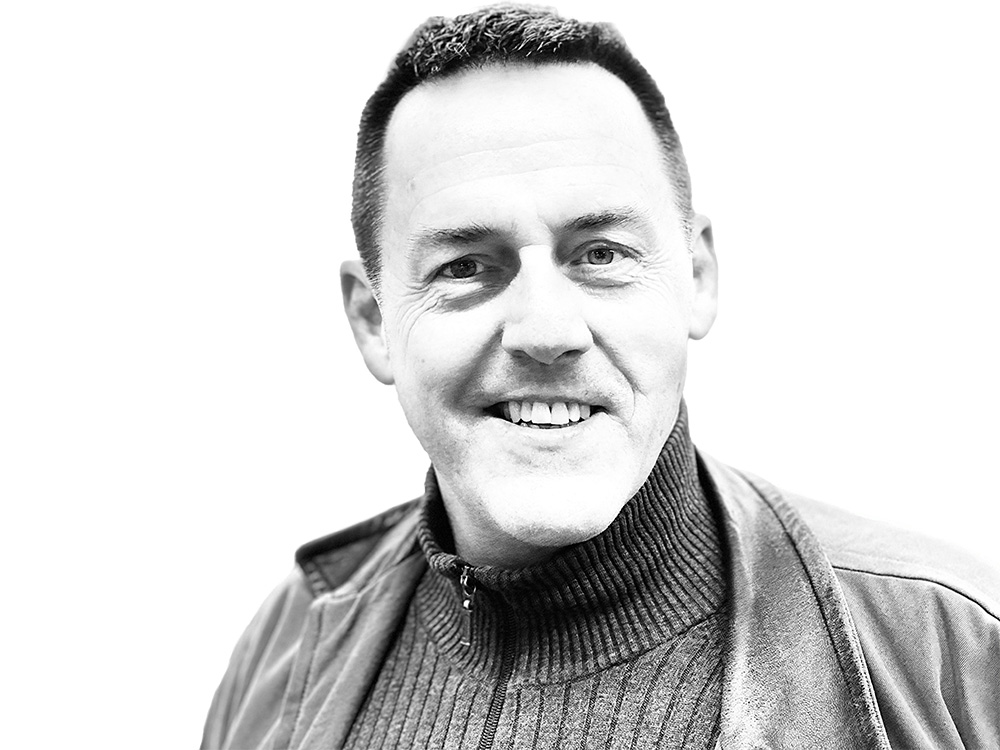In these sessions, students donned HoloLens 2 headsets and went through the traditional screening procedure on their partners, while simultaneously seeing holographic anatomical models superimposed onto their peers. This not only afforded students a more robust understanding of the dynamics between technique, anatomy, and biomechanics, but also serves to prevent injury and help with performance.
For example, a dancer must maintain rotation in the hips and through the legs in order to prevent joint alignment problems. This is evident in a 1st or 2nd position plie. If the muscles of the hip and ankle/foot are not coordinated correctly to maintain the external rotation of the leg, then stresses may be created in the joints, which in turn increases the risk of injury. This is further complicated with jumping and landing.
In November of 2022, Professors Galbraith, Karen Potter (Dept. Chair, Dance, CAS), Susanne Wish-Baratz (Medical Anatomy, SOM), and M.F.A. Candidate Joel Linebach (Dance, CAS) presented their research and approach at the International Association for Dance Medicine & Science (IADMS) conference in Limerick, Ireland (image below.)
At the conference as in the pilot, some members of the audience wore HoloLens headsets while the rest saw the projected mixed reality capture of the screening performed with superimposed holographic anatomy. We took some time to speak with Professor Galbraith about this pilot. The interview below has been edited for clarity and brevity.
How did you come up with the idea to use HoloAnatomy during the screenings?
GARY: It happened organically. At first, we used it just to teach them about anatomy. We were talking about pelvic tilt and one of the students walked right into the skeleton, and I saw that they were exactly the same height. And I thought, "Well, that’s interesting, because if we were to knock down the intensity [of the hologram], we could see them both." Then we were looking at the hologram in a supine position and I saw that it was right about the height of an exam table, so we set one up and one of the dancers hopped up.
That integration made an enormous impact. Previously, we taught this in a lecture classroom with slides, so for this group of particularly kinetic and tactile learners, it’s a game changer. Dancers learn primarily through the sensations of their own body. So when we put the hologram and the real dancer together, it became what I would call, “Semi-experiential” anatomy. This is something that mixed reality does so powerfully: you can have both the hologram and the real world, not just one or the other.
So how do you know it was working, or landing in a new way for your students?
GARY: In a few ways. First, it was in the way they spoke — they weren’t answering my questions with more questions. They were excited and paying close attention. They were able to be much more clear as they spoke about what they saw. There was a confidence that came forward, too — it wasn’t, “....Eh, I got it”, but, “I really get it.” As we moved onto other things, I saw that they had already processed what they learned and began translating that understanding to new concepts, like really thinking about how the hip worked. That’s when I became aware of how much these sessions had impacted them. There was another rationale, too:
when you develop these initiatives as routine and preventative, the student sees that the teacher has their back, so this can be a tool to build trust and ethical leadership. The teacher is the frontline. A student will often first come to their teacher when they have an issue with their body: “Can you take a look at this?” Or, “Is this normal?” If this interaction goes well and the teacher is able to safely and nonjudgmentally identify what’s going on, this paves the way for more discussions in the future so that if bigger issues arise — physically, psychologically, emotionally — the dancer knows where to turn.

